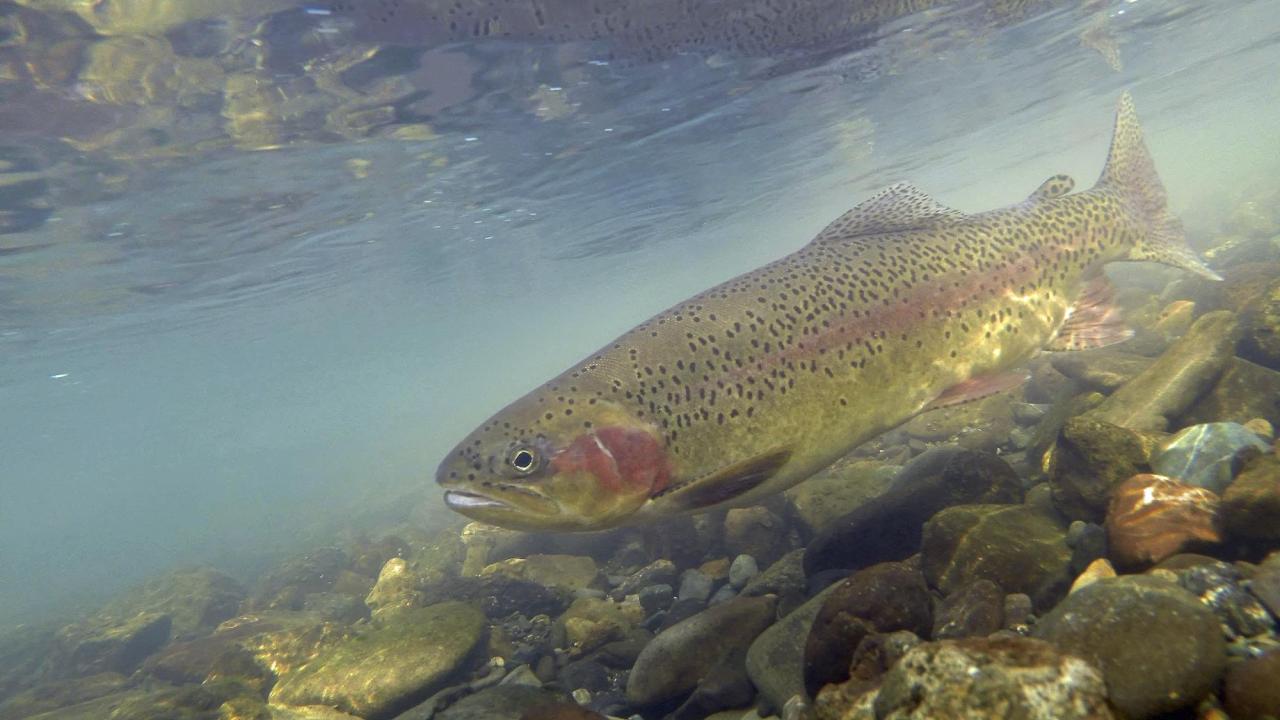In an age of climate whiplash, cold streams and creeks fed by aquifers in volcanic rock could be a refuge for the survival of native species, especially salmon and trout which breed in cold mountain streams.
One source of cold stream water is of course snowmelt, but that can vary greatly from year to year. Another, more stable source comes from springs drawing on water stored in porous volcanic rocks. These volcanic aquifers can feed cold water into creeks and streams year-round, potentially supporting rainbow trout, steelhead, Coho and Chinook salmon.
Scientists do not yet know how well these volcanic aquifers can provide a buffer against swings in climate. Researchers at UC Davis, CSU East Bay, the Lawrence Livermore National Laboratory and California Trout are working together to study how climate changes impact these springs and aquifers, and what effect this has on rainbow trout. They are using stable isotopes to measure how long it takes for water to pass through the aquifer and emerge in a spring. The life histories of trout are recorded in chemical traces in ear bones called otoliths.
Read more about their work in this Waterblog post.
Media Resources
Are spring-fed rivers key to long-term persistence of salmon and trout in California? (California Waterblog)
